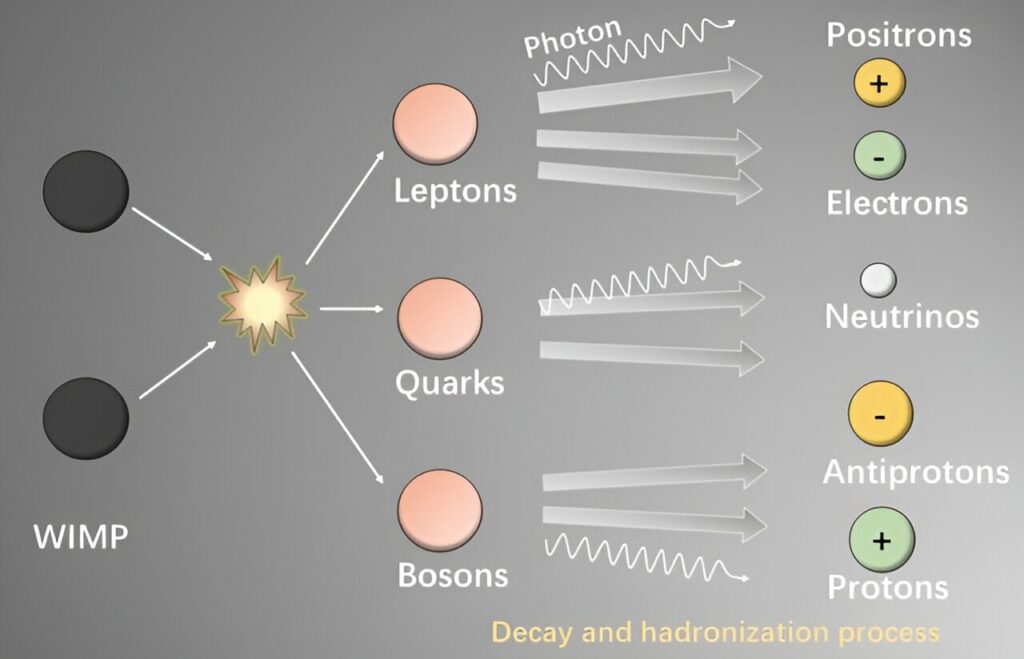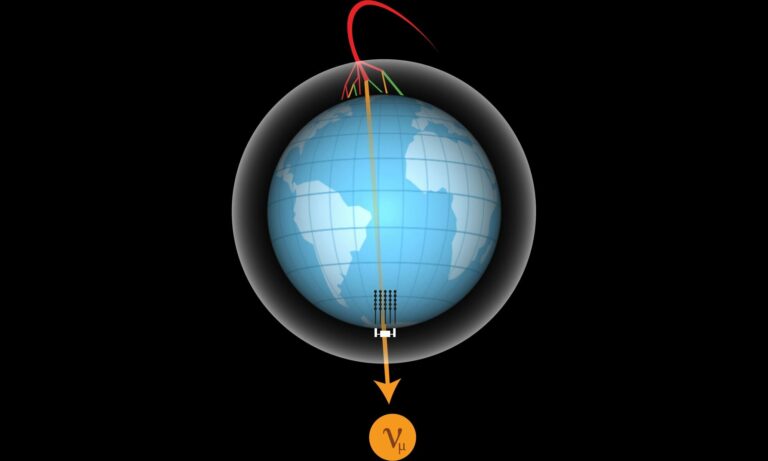Astronomers Investigate Dark Matter Annihilation at Earth’s Core
Dark matter stands out as one of the most perplexing mysteries in contemporary cosmology. While astronomers have amassed compelling supporting evidence through statistics on galaxy clustering, gravitational lensing, and cosmic microwave background fluctuations, the absence of particles in the standard model of particle physics capable of explaining dark matter remains a significant challenge. Moreover, detecting its local effects remains elusive.
This enigma presents a robust theoretical framework that has yet to be definitively unraveled, often indicating that a groundbreaking discovery may be on the horizon. Encouragingly, multiple projects are actively engaged in the quest to uncover dark matter, with the IceCube Neutrino Observatory recently unveiling a noteworthy result. Although IceCube, as a neutrino observatory, cannot directly detect dark matter, it can capture local manifestations of dark matter leading to neutrino production.
One prominent model posits that dark matter comprises massive particles, known as weakly interacting massive particles (WIMPs), primarily interacting with each other and weakly with conventional matter particles. If this WIMP model holds true, it suggests the presence of WIMPs potentially residing in the Earth’s core. In the scenario where dark matter collides with a massive object, such as a planet or star, the dense regular matter in these collisions could decelerate the dark matter, resulting in gravitational entrapment of certain WIMPs within the celestial body. Periodic collisions among these WIMPs could lead to particle decays that produce neutrinos. Consequently, an excess of neutrinos originating from the Earth’s center is anticipated, presenting a detectable signal for IceCube.

In this investigation, the research team scrutinized a decade’s worth of data from IceCube and found no indications of excess neutrinos. With the energy cross-section of IceCube detectors taken into account, this effectively eliminates the possibility of Weakly Interacting Massive Particles (WIMPs) with a mass exceeding 100 GeV, equivalent to slightly more than 100 proton masses.
This outcome aligns with other studies that have also excluded the existence of high-mass WIMPs. While the prospect of lower-mass dark matter particles remains, our cumulative history of eliminating dark matter candidates is considerable. Plans are underway to enhance IceCube’s sensitivity, paving the way for additional tests focused on detecting lower mass WIMPs. This advancement holds the potential to achieve a local detection of dark matter. However, as we systematically rule out various dark matter candidates, alternative approaches, such as exploring modified gravity, may become a necessary consideration. Nevertheless, this exploration is a topic for future discussion.
This article is republished from PhysORG under a Creative Commons license. Read the original article.
Do not forget to share your opinion with us to provide you with the best posts !




0 Comments